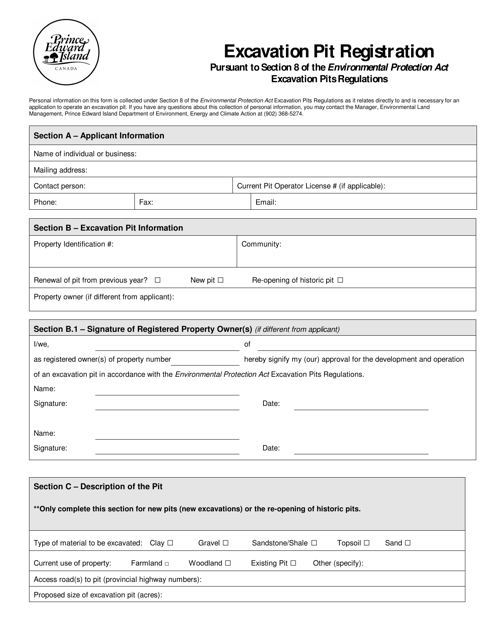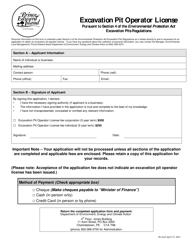Excavation Pit Registration - Prince Edward Island, Canada
Excavation Pit Registration in Prince Edward Island, Canada is a process to register and regulate excavations or digging activities. It helps ensure safety by identifying potential hazards and coordinating with utility companies to prevent damage to underground infrastructure.
In Prince Edward Island, Canada, the excavation pit registration is typically filed by the property owner or the contractor hired for the excavation work.
FAQ
Q: What is excavation pit registration in Prince Edward Island, Canada?
A: Excavation pit registration is the process of notifying the appropriate authorities in Prince Edward Island about any excavation activity.
Q: Why is excavation pit registration required?
A: Excavation pit registration is required to ensure the safety of workers and the public, as well as to protect underground utilities.
Q: Who needs to register an excavation pit in Prince Edward Island?
A: Anyone planning to carry out excavation activities in Prince Edward Island needs to register an excavation pit.
Q: How do I register an excavation pit in Prince Edward Island?
A: You can register an excavation pit by contacting the appropriate authority in Prince Edward Island, such as the Department of Transportation, Infrastructure and Energy.
Q: What information do I need to provide for excavation pit registration?
A: You will typically need to provide details about the location of the excavation, the purpose of the excavation, and the duration of the activity.
Q: Are there any fees for excavation pit registration?
A: Yes, there are usually fees associated with excavation pit registration. The specific fees may vary depending on the jurisdiction and the nature of the excavation.
Q: What happens after I register an excavation pit?
A: After registering an excavation pit, the appropriate authorities will review the information provided and may issue permits or provide further instructions.
Q: What are the consequences of not registering an excavation pit in Prince Edward Island?
A: Failing to register an excavation pit can result in penalties and may also pose a risk to the safety of workers and the public.





